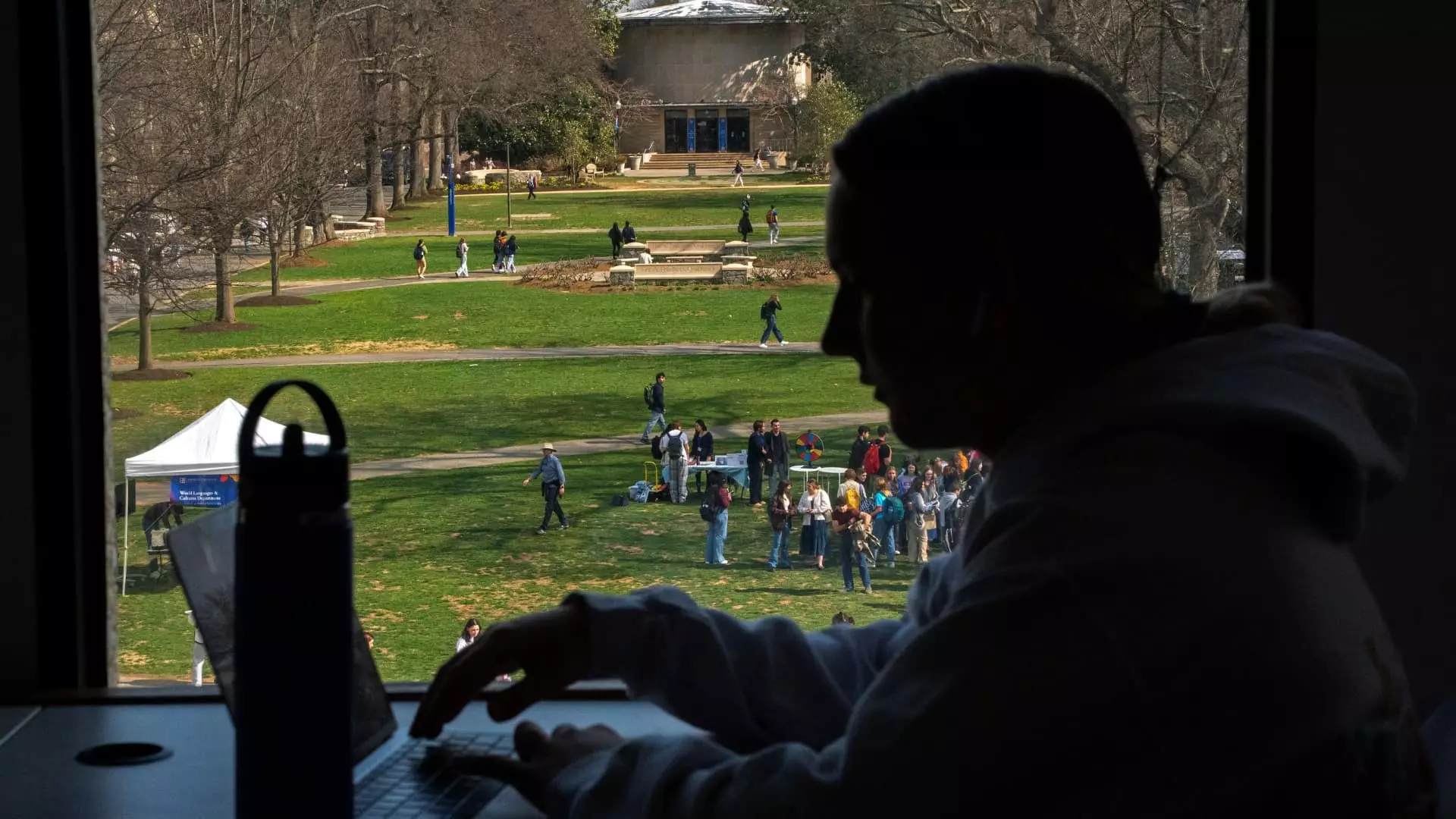As the nationwide student loan payment pause sun setting looms on the horizon, a staggering 9 million borrowers are on the brink of a financial crisis that could severely impact their lives. The Federal Reserve Bank of New York recently delivered a harsh reminder: those missing payments in 2025 may see their credit scores plummet, with some facing declines of up to 171 points. This revelation may come as a shock to many who have spent years in relative comfort, shielded from the direct consequences of unpaid debts. But the idyllic period of suspension is long gone, and reality is poised to hit hard.
America’s student loan crisis is a multifaceted pandemic in its own right. After years of punitive interest rates, schools raising tuition fees in tandem with minimal wage growth, the loan system has pushed many into a state of despair. Faced with the prospect of high credit scores collapsing as millions enter potential delinquencies, the question remains: How did we allow this to happen?
The Bloodbath of Credit Ratings
The gravity of upcoming credit score drops is particularly dire for those who have historically maintained solid scores. Individuals who once benefited from favorable credit ratings will likely find themselves shackled to a life of increased financial burdens due to their credit scores suffering a brutal decline. Those who had previously enjoyed easy access to loans and reasonable interest rates may now find themselves unable to qualify for mortgage or auto loan applications. This harsh reality not only impacts individual borrowers but also ripples through the economy, as tightened lending criteria stifles consumer spending and further slows down growth.
For those with scores below 620, the pain could manifest as an average decline of 87 points—a less dramatic fall, but still untenable. The “good” credit rating threshold is typically considered to be around 670; hence, the financial fallout for many will leave them teetering on the brink of economic instability. These borrowers may get lost in a web of elevated borrowing costs and the inability to access funding when it’s critically needed, ultimately entangling them in a vicious cycle that further compromises their financial stability.
Options for the Financially Strapped
However, amidst the impending chaos, some glimmers of hope emerge for borrowers struggling to manage their loans. Consumer advocates emphasize the importance of exploring affordable repayment options, particularly income-driven repayment plans that tie monthly obligations to one’s discretionary income. For many, this could mean zero-dollar payments—no longer an illusion but a tangible solution.
The U.S. Department of Education’s recently reopened IDR plan applications will offer some borrowers much-needed respite from repayment stress. Yet, if one is already in default, a rehabilitation strategy or consolidation could help restore one’s credit standing. These pathways require effort and diligence, including making nine consistent monthly payments. Nonetheless, the road toward recovery appears pockmarked with obstacles and frustration, especially for those who may already be overwhelmed by financial distress.
Consumer Awareness and Financial Vigilance
The importance of consumer awareness in this landscape cannot be overstated. Borrowers need to actively monitor their credit reports regularly, ensuring accuracy across all reporting agencies—Experian, Equifax, and TransUnion. Awareness can prevent further degradation of credit scores and provide vital insights into financial standing. With free access to credit reports being readily available, the onus is on borrowers to be proactive.
But let’s take a step back and analyze: why does the responsibility of maintaining this awareness fall exclusively on the individual? It speaks volumes about our system, where the burden often lies with the individual rather than the institution that created and perpetuated this cycle of loans and debts. The reality is that higher education has become a financial gamble, and it’s often the most marginalized who bear the brunt of this systemic failure.
As governments continue to debate potential student loan reforms, one question remains critical: how can we create a better future where education doesn’t equate to an anchor of debt? The current trajectory not only harms individuals but undermines our collective economic stability. The time for real solutions is now, and if we fail to act, we might just witness a generation trapped by the insidious cycle of student loan delinquency.

